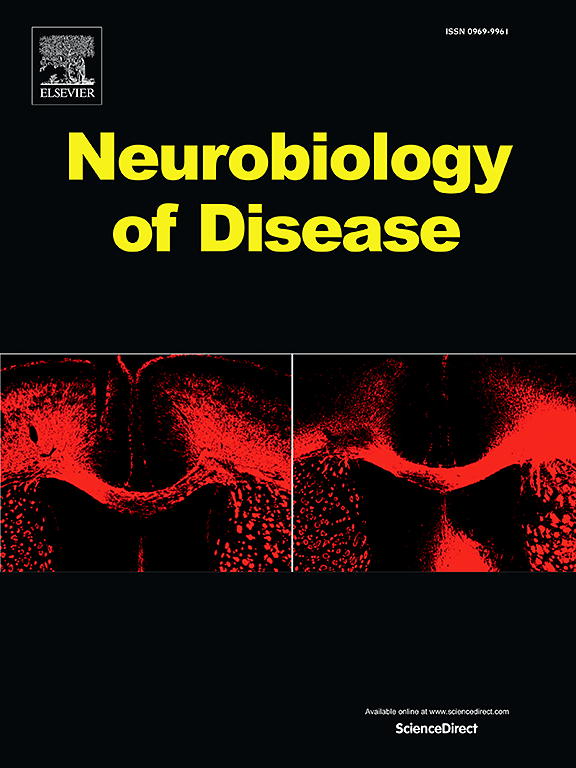Cerebellar lipid dysregulation in SCA3: A comparative study in patients and mice
IF 5.1
2区 医学
Q1 NEUROSCIENCES
引用次数: 0
Abstract
Spinocerebellar ataxia type 3 (SCA3) is the most common dominantly inherited ataxia and belongs to the family of nine diseases caused by a polyglutamine expansion in the disease-causing protein. In SCA3, a polyglutamine expansion in ATXN3 causes neuron loss in disease-vulnerable brain regions, resulting in progressive loss of coordination and ultimately death. There are no disease-modifying or preventative treatments for this uniformly fatal disorder. Recent studies demonstrate prominent white matter atrophy and microstructural alterations in disease-vulnerable brain regions of SCA3 patients and mouse models. However, the major constituent of white matter – lipids – remains understudied in SCA3.
In this study, we conducted the first unbiased investigation of brain lipids in SCA3, focusing on the disease-vulnerable cerebellum of SCA3 postmortem patients and mouse models. Liquid chromatography-mass spectrometry uncovered widespread lipid reductions in patients with SCA3. Lipid downregulation was recapitulated in early- to mid-stage mouse models of SCA3, including transgenic YACQ84 and Knock-in Q300 mice. End-stage Knock-in Q300 mice displayed a progressive reduction in lipid content, highlighting targets that could benefit from early therapeutic intervention. In contrast, Atxn3-Knock-out mice showed mild lipid upregulation, emphasizing a toxic gain-of-function mechanism underlying lipid downregulation in SCA3.
We conclude that lipids are significantly altered in SCA3 and establish a platform for continued exploration of lipids in disease through interactive data visualization websites. Pronounced reductions in myelin-enriched lipids suggest that lipid dysregulation could underlie white matter atrophy in SCA3. This study establishes the basis for future work elucidating the mechanistic, biomarker, and therapeutic potential of lipids in SCA3.

求助全文
约1分钟内获得全文
求助全文
来源期刊

Neurobiology of Disease
医学-神经科学
CiteScore
11.20
自引率
3.30%
发文量
270
审稿时长
76 days
期刊介绍:
Neurobiology of Disease is a major international journal at the interface between basic and clinical neuroscience. The journal provides a forum for the publication of top quality research papers on: molecular and cellular definitions of disease mechanisms, the neural systems and underpinning behavioral disorders, the genetics of inherited neurological and psychiatric diseases, nervous system aging, and findings relevant to the development of new therapies.
 求助内容:
求助内容: 应助结果提醒方式:
应助结果提醒方式:


